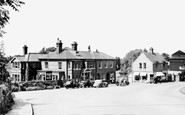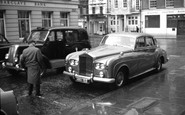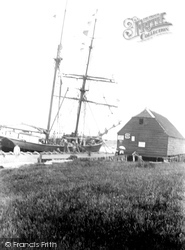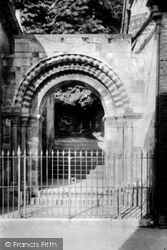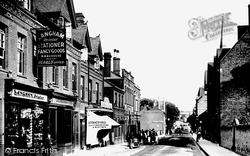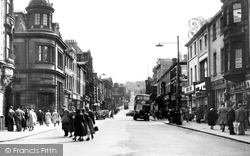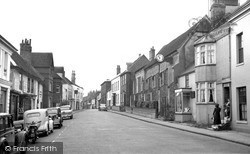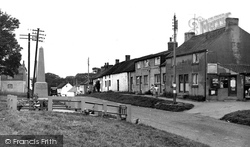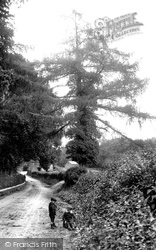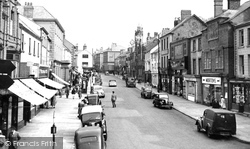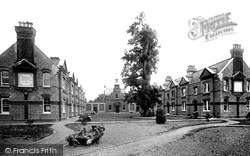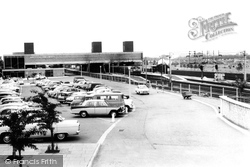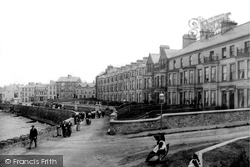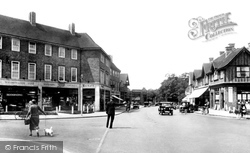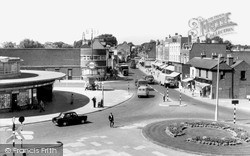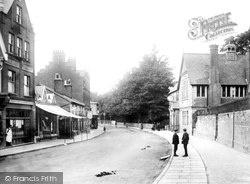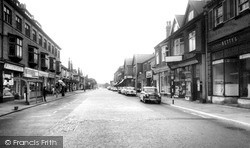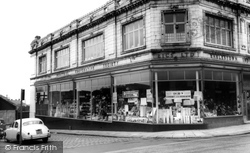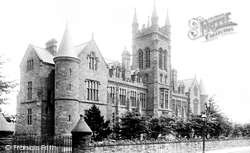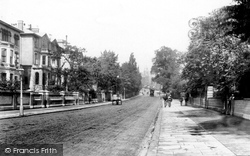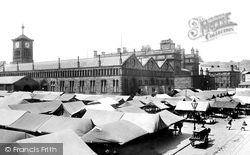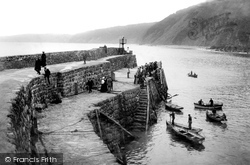Places
4 places found.
Those places high-lighted have photos. All locations may have maps, books and memories.
Photos
87 photos found. Showing results 341 to 87.
Maps
21 maps found.
Books
Sorry, no books were found that related to your search.
Memories
1,091 memories found. Showing results 171 to 180.
The Day We Set Earith On Fire
Well . . . not all of it! My dad was enlisted USAF stationed at Alconbury 1959-1960 and he found us a place on High Street that we shared with a number of other people. I believe it was one of the first three ...Read more
A memory of Earith in 1960 by
My Childhood Of Old Bracknell Farm
Hi Peter, I remember the Thompkins was it the baker or was that the Cheneys? Joe Smith was the newsagent who used to treat the kids to a summer outing by train every summer. We used to get a new florin and a bag ...Read more
A memory of Bracknell in 1949 by
Bretts Farm Romford Rd Aveley
I arrived in Aveley in 1957/58 I was herdsman at Bretts Farm, Romford Road and worked for David Watt. Once a year we would take the young cattle through Belhus Park then along Daglen Drive, up Stifford Road to Ford Place, ...Read more
A memory of Aveley by
Mayfair Furrier
In 1961, I became an apprentice furrier to Brainin Bothers of New Bond Street. Brainin's owned a large store (I was told it was as big as Harrods) in Russia.They escaped the Communists and moved to Vienna, only to escape Hitler in ...Read more
A memory of London by
Growing Up In Northwood Hills
I was born in a small maisonette off Alandale Drive and my mum still lived there until she passed away aged 95 in 2014. The border between Hillingdon/Harrow runs across the back garden. I attended Pinner Wood ...Read more
A memory of Northwood Hills in 1960 by
Your Dad
You may remember me as your Mum's Avon Lady in 1970; you lived in Clare Court. I have so many memories, some photos of Bell Street. Oh, as an after-thought I can remember, wait for it... sequence dancing. My uncle's were; David New and ...Read more
A memory of Tidworth by
Ordsall
I was born in New Bury St just off Tattoo St. I remember playing in the streets, hand making bogies going to St Joeys School, going down the old railtracks and playing in the burnt out buildings. I remember going to the tiny picture house ...Read more
A memory of Salford in 1964 by
Memories Of A War Time Evacuee
I spent 3 years at Dumbrell's Farm, Milton Street, Sussex. I was a little Birmingham evacuee (aged 9 years). I went to school at Alfriston, my 'Uncle John' took me fishing in the River Cuckmere and we went ...Read more
A memory of Milton Street in 1940 by
How I Found Abbotsley
My Dad, a countryman born and bred, went to London in the late 1920's for work - since there was a huge depression in his type of country work (farm labourer). He met my Mum, and I was born in Thornton Heath, Surrey, in 1930. ...Read more
A memory of Abbotsley in 1930 by
My Mother Sarah Jane White
My mum was born in Brandon in 1910, one of 14 children. She sailed to Australia on the Vedic in 1926 and sadly never returned to Brandon. My son and I visited Brandon in 2010 and were disappointed to find that the street ...Read more
A memory of Durham in 2010 by
Captions
533 captions found. Showing results 409 to 432.
The buildings on the right made way for new ones at the entrance to High Street in the 1950s. Seaside and Coastal Sussex: From Bosham to Rye
In the south-west corner of the Garden of Remembrance, the Norman Gate gives access from the High Street.
In celebration of the new crossing that carried the railway over the river, the 18th-century sandstone inn we see here was renamed The Severn Bridge Hotel in 1879.
The chemist moved from No 49 High Street to the shop on the left in 1967.
South Street, extending over the River Wey Navigation to the station, did not exist until after the arrival of the railway in the town in 1848-1849.
When this view was taken, Manchester Road was a much more important shopping street than it is today.
In the High Street there are a few parked cars, but no pedestrians, apart from the two women and a child in the doorway on the right.
Looking down the main street, we see the old post office (right), now two cottages. The new post office is in the Bull Inn, to the right, next to the tin-roofed church of St Thomas.
Poole's population grew substantially during the 20th century as new industries arrived to supplement the declining merchant trade.
A meeting house was established in West Street in 1719, which survived until 1834.
Before the advent of the car moved shoppers to out-of- town stores, main streets such as this displayed a rich multiplicity of goods, with regional shops trading beside the more well-known
This is part of Old Leigh, with the railway on the right and the sea behind the buildings on the left.The main shopping centre has moved up the hill to Leigh Broadway but this High Street is still
The prominent non-conformist preacher Reverend Rowland Hill and his congregation originally had their almshouses built in Hill Street, Blackfriars in 1811 to provide comfortable accommodation for 'respectable
The coming of the railway to Broxbourne in 1840 had further stimulated the growth of the village, and demand from London-bound commuters heading for Liverpool Street and St.
The challenge was met by new boarding houses, tall and each able to take in several families. They were built in rows.
A lone policeman in his high-buttoned tunic directs traffic emerging from the Ewell Road to cross the junction with Station Way, The Broadway and the High Street.
Although the original village green is away to the south, along the High Street it is the superbly spacious circular underground station by Charles Holden, and the grassy roundabout, that create a new
The building on the right, just before the King Street junction, was the Jubilee Institute.
This took in the UDCs of Egremont, New Brighton, Leasowe, Poulton, Moreton, Seacombe and Wallasey.
A few years earlier, one local commentator had written: 'the other side [of Earle Street] has been considerably improved with the growth of the local Co-operative Society.
There were already several schools in the town when the Minister of the First Presbyterian Church in Belfast advertised the arrival of a new academy.
The camera looks towards Hampstead High Street, formerly Red Lion Hill.
This photograph shows the open market in New Market Street. Here we see the Market Hall (or House) from the rear, and the back of the Town Hall; its 20ft-high wall guards a courtyard.
alerted the new breed of holidaymaker to the charm of its steep, cobbled streets; by 1890 there were three hotels.
Places (4)
Photos (87)
Memories (1091)
Books (0)
Maps (21)



